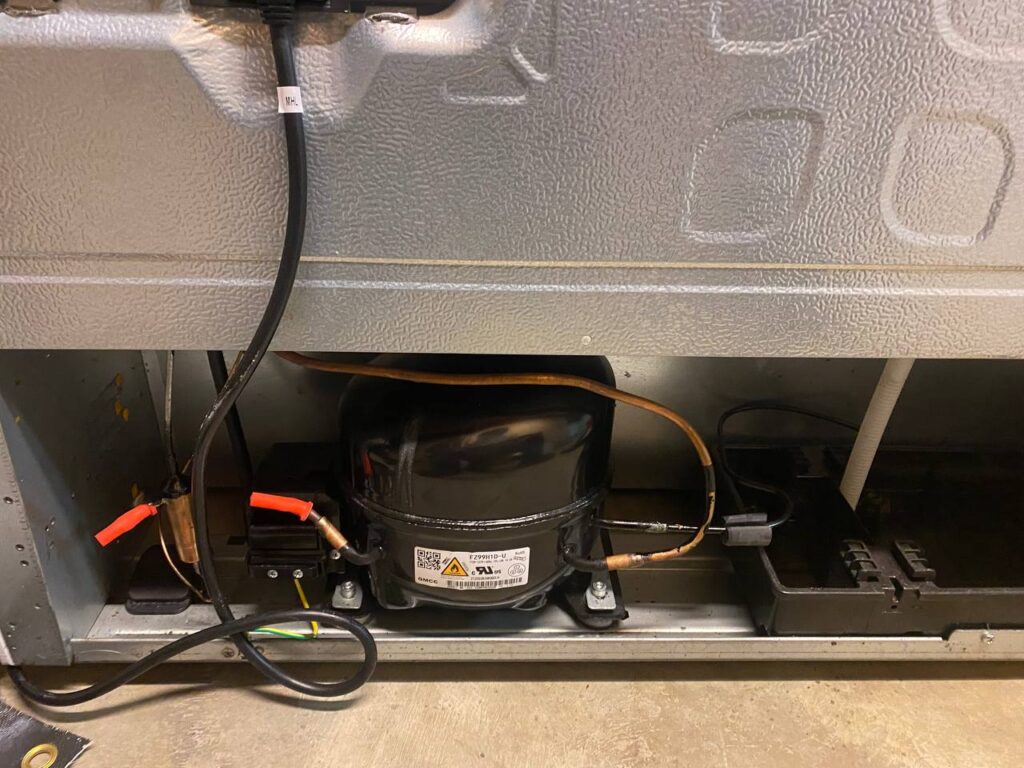When your refrigerator’s compressor starts acting up, it can feel like a ticking time bomb for your food and your wallet. A faulty compressor not only threatens the freshness of your groceries but can also lead to costly repairs or replacements. Fear not! This essential guide to fridge compressor repairs will empower you to tackle these issues head-on. We’ll walk you through the most common symptoms of compressor problems and tips for when to call in the experts. Save your food and hard-earned money by understanding how to keep your fridge running smoothly. Don’t let compressor issues ruin your day; instead, equip yourself with the knowledge to tackle repair challenges and keep your kitchen humming efficiently. Ready to dive in and save both your food and funds?
Common Causes of Compressor Failure
Understanding the root causes helps avoid repeat issues:
a. Refrigerant Problems
Too much or too little refrigerant strains the compressor. Leaks can cause overheating and eventual motor burnout.
b. Dirty Condenser Coils
Poor airflow causes the compressor to overwork. Monthly cleaning is essential in commercial environments.
c. Electrical Issues
Loose connections, power surges, or failing components can cause compressor motors to short out.
d. Poor Maintenance
Lack of regular servicing is one of the biggest contributors to premature compressor failure.
e. Age and Wear
Even well-maintained compressors eventually lose efficiency after 7–12 years, depending on usage.
Repair or Replace? How to Make the Right Call
Not every compressor issue requires full replacement. Operations Managers should consider:
- Age of the unit
If it’s near the end of its life, replacement may be more cost-effective.
- Cost of repair vs replacement
A general rule: if repair exceeds 40–50% of the cost of a new compressor, replacement is recommended.
- Availability of parts: Some older models have discontinued components.
- Refrigerant type: Units using R-22 or other phased-out refrigerants may justify upgrading.
- Operational impact: Downtime costs sometimes exceed the equipment cost.
A qualified technician can run diagnostics and provide a clear recommendation.
What Happens During a Commercial Compressor Repair?
A professional service technician will typically:
- Inspect electrical connections
- Test refrigerant levels and pressure
- Check temperature differential
- Examine the condenser and evaporator coils
- Identify damaged components
- Assess whether the compressor can be repaired or must be replaced
If replacement is required, the technician will recover the refrigerant, remove the old compressor, install a new one, recharge the system, and test the unit thoroughly.
Accurate diagnostics ensure the real issue is addressed not just the symptom.
The Importance of Professional Diagnostics
Compressors are complex and expensive. Misdiagnosis can lead to unnecessary replacements or repeated failures. A certified commercial technician uses:
- Manifold gauges
- Leak detection tools
- Electrical testers
- Temperature probes
- Manufacturer-specific diagnostic procedures


